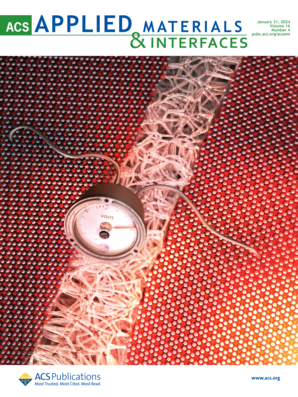Contiguous Mo Species and SMSI Effect in MoOx Reinforce Catalytic Performance in Reverse Water–Gas Shift Reaction
IF 8.3
2区 材料科学
Q1 MATERIALS SCIENCE, MULTIDISCIPLINARY
引用次数: 0
Abstract
Reverse water–gas shift (RWGS) reaction is a promising strategy for the effective valorization of CO2. Because of its endothermic nature, a high-performance catalyst with high durability at high temperatures has been required. Herein, we reveal the dynamic structural changes of platinum-loaded molybdenum suboxide catalysts (Pt/MoOx) in RWGS reaction by multiple operando and in situ measurements, and the catalyst exhibits high activity and CO selectivity, as well as high stability at 500 °C due to the emergence of contiguous Mo species (Mo--Mo) and the strong metal–support interaction (SMSI) effect in MoOx. In situ X-ray absorption fine structure (XAFS) measurements demonstrated that the RWGS reaction is driven by reversible redox of in situ-formed MoOx suboxide, where the contiguous Mo--Mo species in MoOx act as activation sites for CO2. Comprehensive analysis revealed that the MoOx shell surrounding the Pt nanoparticles (NPs) suppresses CO adsorption, thereby resulting in high CO selectivity. Furthermore, the catalyst exhibited a continuous activity increase in the earlier stage of operation at 500 °C, which was attributed to the partial carburization of MoOx during the reaction and the associated increase in the electron density of the Mo species. These findings advance the understanding of RWGS reaction mechanism and suggest innovative strategies for the development of high-performance oxide catalysts with enhanced stability.

MoOx中的连续Mo物质和SMSI效应增强了逆水气转换反应的催化性能
逆水气转换(RWGS)反应是一种很有前途的CO2有效增值策略。由于其吸热性质,需要一种在高温下具有高耐久性的高性能催化剂。本研究通过多操作分子和原位测量揭示了负载铂的亚氧化钼催化剂(Pt/MoOx)在RWGS反应中的动态结构变化,该催化剂表现出高活性和CO选择性,并在500℃时表现出高稳定性,这是由于在MoOx中出现了连续Mo组分(Mo—Mo)和强烈的金属-载体相互作用(SMSI)效应。原位x射线吸收精细结构(XAFS)测量表明,RWGS反应是由原位形成的MoOx亚氧化物的可逆氧化还原驱动的,其中MoOx中相邻的Mo—Mo物种充当CO2的活化位点。综合分析表明,Pt纳米颗粒(NPs)周围的MoOx壳层抑制了CO的吸附,从而产生了高CO选择性。此外,催化剂在500°C时表现出持续的活性增加,这是由于在反应过程中MoOx的部分渗碳和Mo物种的电子密度的增加。这些发现促进了对RWGS反应机理的理解,并为开发具有更高稳定性的高性能氧化物催化剂提供了创新策略。
本文章由计算机程序翻译,如有差异,请以英文原文为准。
求助全文
约1分钟内获得全文
求助全文
来源期刊

ACS Applied Materials & Interfaces
工程技术-材料科学:综合
CiteScore
16.00
自引率
6.30%
发文量
4978
审稿时长
1.8 months
期刊介绍:
ACS Applied Materials & Interfaces is a leading interdisciplinary journal that brings together chemists, engineers, physicists, and biologists to explore the development and utilization of newly-discovered materials and interfacial processes for specific applications. Our journal has experienced remarkable growth since its establishment in 2009, both in terms of the number of articles published and the impact of the research showcased. We are proud to foster a truly global community, with the majority of published articles originating from outside the United States, reflecting the rapid growth of applied research worldwide.
 求助内容:
求助内容: 应助结果提醒方式:
应助结果提醒方式:


